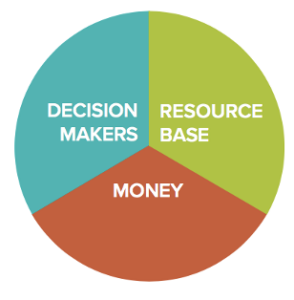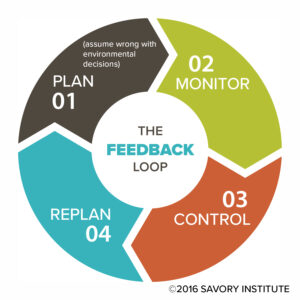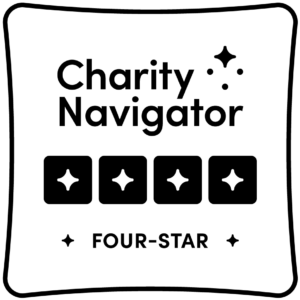Overview
Where the context for our goals and actions may once have been focused on immediate needs, desires, or a problem, a holistic context shifts the focus beyond them to a conscious awareness of the life you want to lead and the life-supporting environment and behaviors that help ensure it.
You will find that in framing your management and decision making within a holistic context, things rapidly change for the better because many of the problems we face are really symptoms resulting from the unintended consequences of our past management.
When management decisions are guided by a holistic context, it becomes possible to achieve what you hope to achieve without ever losing sight of what is most meaningful to you in both the short and long term. That’s why the utmost consideration should be given to creating one.
The first step is to define the whole your management encompasses to clarify the boundaries of what you are managing and to identify the people who will create the holistic context.
A New Framework for Handling Complex Decisions
universal
based on new insights
Whole Under Management
Make all management decisions from the perspective of the whole under management, bearing in mind that it always influences, and is influenced by, both greater and lesser wholes.
For a whole to be manageable at any level – be it an individual, a family, a company, or a division within it – the minimum it should include is:

- The decision-makers – those who make management decisions (at any level) or may have veto power over them.
- The resource base, which refers to the natural and physical resources – land, waterways, buildings, equipment, and other assets – from which you will generate revenue or derive support, plus the people who influence or are influenced by your management.
- The money available or that you can generate from the resource base.
Holistic Context
Creating one all-embracing holistic context for management actions in the whole you are managing is the next critical step. You will refer to it often when making day-to-day management decisions, and when developing strategies and policies that have traditionally been framed within the much narrower context of meeting a need, desire or addressing a problem.
The holistic context has two and sometimes three, aspects:
- Quality of life. This is where most people will start. It is an expression of how you, the decision-makers want your lives to be within the whole under management (while meeting the purpose – if one has been stated).
- Statement of Purpose. If you are managing an organization formed for a specific purpose, the first step in creating your holistic context, is to clearly state in a single sentence what that purpose is. This is the most vital piece of an organization’s holistic context and will inform all the rest of it.
- Future resource base. A description of the environment in the state it will have to be centuries from now to sustain that quality of life for your descendants. And, a description of how you, the decision-makers, will have to behave to ensure the continued support of all the people who influence or are influenced by your management.
Ecosystem Processes
To work with the complexity inherent in the greater ecosystem that sustains us all, we break it into four fundamental processes, each representing vital functions within it:
- water cycle,
- mineral cycle,
- community dynamics (the patterns of change and development within communities of living organisms), and
- solar energy flow.
We recognize that any action taken to affect one of these processes automatically affects them all. Where we once viewed our global ecosystem – everything on our planet and in its surrounding atmosphere – mainly as a source of raw materials, we now view it as the foundation on which all human endeavor, all economies, and all life, are built.
Even in situations where people may have little power to influence the environment directly, they will, through the cumulative effect of their actions, have an impact on it and must specify in their holistic context what that impact has to be if their descendants are to live similar lives.
Actions and Decision Making
As you move forward with management you will create many plans involving a variety of goals and objectives and the tactics, strategies and policies for achieving them. Just as before, the actions you plan will address your immediate needs or desires for improving your lives or your business, and for addressing any problems that stand in the way.
But, your holistic context reminds you to not lose sight of what is most meaningful to you in both the short and long term, and it will lead to the inclusion of what you plan to do to create the quality of life your holistic context describes and the environment and behaviors that will sustain it.
...your holistic context reminds you to not lose sight of what is most meaningful to you in both the short and long term, and it will lead to the inclusion of what you plan to do to create the quality of life your holistic context describes and the environment and behaviors that will sustain it.
This generally necessitates considerable thought, assessment of current actions and development of plans to achieve yet further goals that will bring about the lives you desire and, if an organization, to meet your stated purpose.
You decide which actions to take to achieve your goals and objectives based on the same common-sense criteria you’ve always used: past experience, expert advice, research results, cultural norms, peer pressure, expediency, compromise, cost, cash flow, profitability, intuition, laws and regulations, and so on, but now you also run through a series of checks to make sure the proposed actions are aligned with your holistic context.
Context Checks
After selecting which actions are best to take, you now pose a series of questions to filter out actions that might not be aligned with your holistic context, and thus not socially, environmentally and economically sound both short and long-term. In brief, the questions are:
- Does this action address the root cause of the problem?
- Does it address the weakest link in the situation?
- Does it provide a greater return, in terms of time and money spent, than other possible actions?
- Which of two or more possible enterprises provides the best gross profit (if choosing among enterprises)?
- Is the energy or money to be used in this action derived from the most appropriate source, and will it be used in the most appropriate way, based on your holistic context?
- Will this action lead toward or away from the future resource base described in your holistic context?
- Finally, based on the picture that has emerged, how do you feel about this action now – how will it affect your quality of life and that of others?
When asked and answered in quick succession, the checking questions enable you to see the likely effect of any action on the whole you manage. You don’t want to dwell on any one check to the point that you lose sight of the picture formed by scanning them all.
If the action passes most or all of the checks that apply, you should feel fairly confident in implementing it. If it fails one or more checks, you may want to modify how you implement the action, abandon the idea altogether, or, in some cases, go ahead anyway, better informed and knowing what to monitor to keep things on track.
There are no rules on the order in which to ask these questions, except one: the “Gut Feel check” should always be last. Your answers to the questions asked in this check should reflect the impression gained after passing through all the others.
As you gain experience this checking for alignment with your holistic context will become intuitive and your decision-making both easier and faster.
Feedback Loop
In any situation we manage, we should be monitoring in order to make happen what we want to happen, i.e. to bring about desired changes in line with our holistic context. The word plan then becomes a 24‑letter word: plan‑monitor‑control‑replan.
All hope of reaching any goal or objective without great deviation or waste depends on this process: Once a plan is made, it is then monitored. If results begin to deviate from what was planned, then control is instituted and the deviation is brought back to plan. Sometimes events go beyond our control, or we fail to control the deviation, and there is a need to replan. The better we control the plan, the less we need to replan.

We depict this process as a loop because it is a continuous effort. Close attention to it is what makes management proactive rather than reactive.
This post is adapted from: Holistic Management: A Commonsense Revolution for Restoring Our Environment, Third Edition, by Allan Savory and Jody Butterfield (Island Press, 2016)





